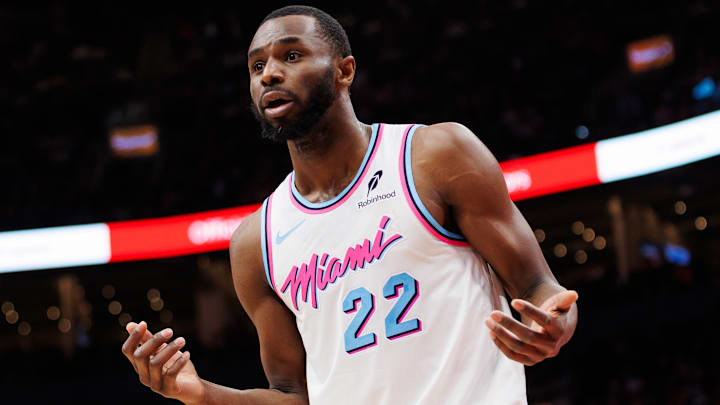The 2026 NBA trade deadline is months away, and already the Miami Heat have a clear directive for how to handle it: compile first-round picks so they’re ready to strike when the next star becomes available.
This is not an attempt to oversimplify their situation, or another way of deriding them for failing to acquire a name bigger than Norman Powell this summer. This is merely an acknowledgement of what the Heat are silently screaming from the top of the Kaseya Center.
Team president Pat Riley and general manager Andy Elisburg have established this as an organization that chases stars. Their moves this offseason reinforce as much—not because they are pushing for a marquee headliner now, but because the cap sheet is set up for tons of flexibility either next summer, or more likely, during the 2027 offseason.
Still, spending power alone isn’t enough. The Heat need more draft equity to bag that next big name. The NBA’s new reality demands it.
The Heat are not going to sign a superstar free agent
Star players are not leaving in free agency anymore. Paul George signing with the Philadelphia 76ers last summer is the exception rather than the rule. (And look how that is turning out.) That inherently devalues the cap-space approach Miami is currently taking.
Extensions are the new norm. As ESPN’s Bobby Marks pointed out, an average of 22 players per summer have signed veteran extensions the past two years. During the five offseasons prior, this averaged checked in under eight.
In fact, more players have signed veteran extensions these past two summers (44) than the previous five combined (37). That’s absurd. And it is something the Heat, along with every other superstar-chaser, must reconcile.
Financial flexibility can, of course, be used for trades. The Heat are well-positioned to save selling teams boatloads of immediate money in the summers to come. Except, when is the last time you saw a star name shipped out for more cap relief than draft equity?
Multiple first-round picks and prospects need to exchange hands if you’re landing an All-NBA talent. That isn’t necessarily gospel if you’re going after a star in the back end of their prime. Just look at what the Heat received for Jimmy Butler, or what the Phoenix Suns got for Kevin Durant. Miami isn’t aiming for those types of big names. It very clearly wants that dude in Wisconsin everyone else is circling like famished vultures.
Miami needs more draft assets
Fast forward to June 2026, around the draft, and the Heat will have four first-round picks to dangle: next year’s, along with firsts in 2029, 2031, and 2033. This is far from nothing, particularly when they could also have names like Jaime Jaquez Jr., Kel’el Ware, and Kasparas Jakucionis to sweeten the pot.
At the same time, when you’re acquiring a star, your own draft picks become intrinsically less valuable. The Milwaukee Bucks, for instance, won’t place much stock in the Heat’s 2029 first-round if they’re getting Giannis Antetokounmpo.
This increases the value of loading up on selections from other squads. Whether Miami has the tools to do this is debatable. It’s not oversaturated with expendable talent worth first-rounders. Bam Adebayo, Tyler Herro, and Kel’el Ware are the only players guaranteed to net a first if traded in a vacuum.
Ratcheting up the draft-pick stash could require the Heat to take on money that extends past next season. That shouldn’t be a deal-breaker. It may eat into their future cap space, but the truth is, that future cap space alone isn’t getting them a star.
